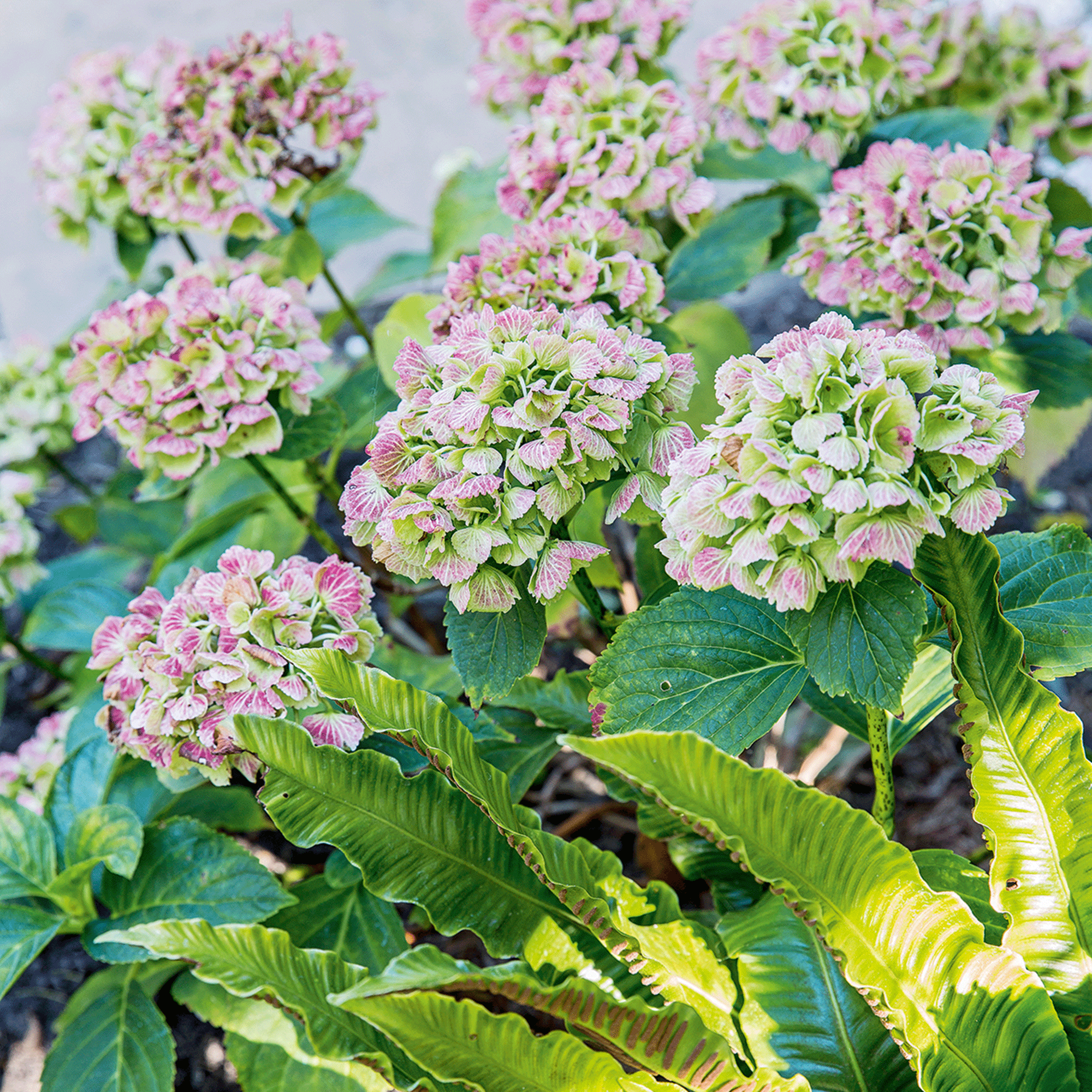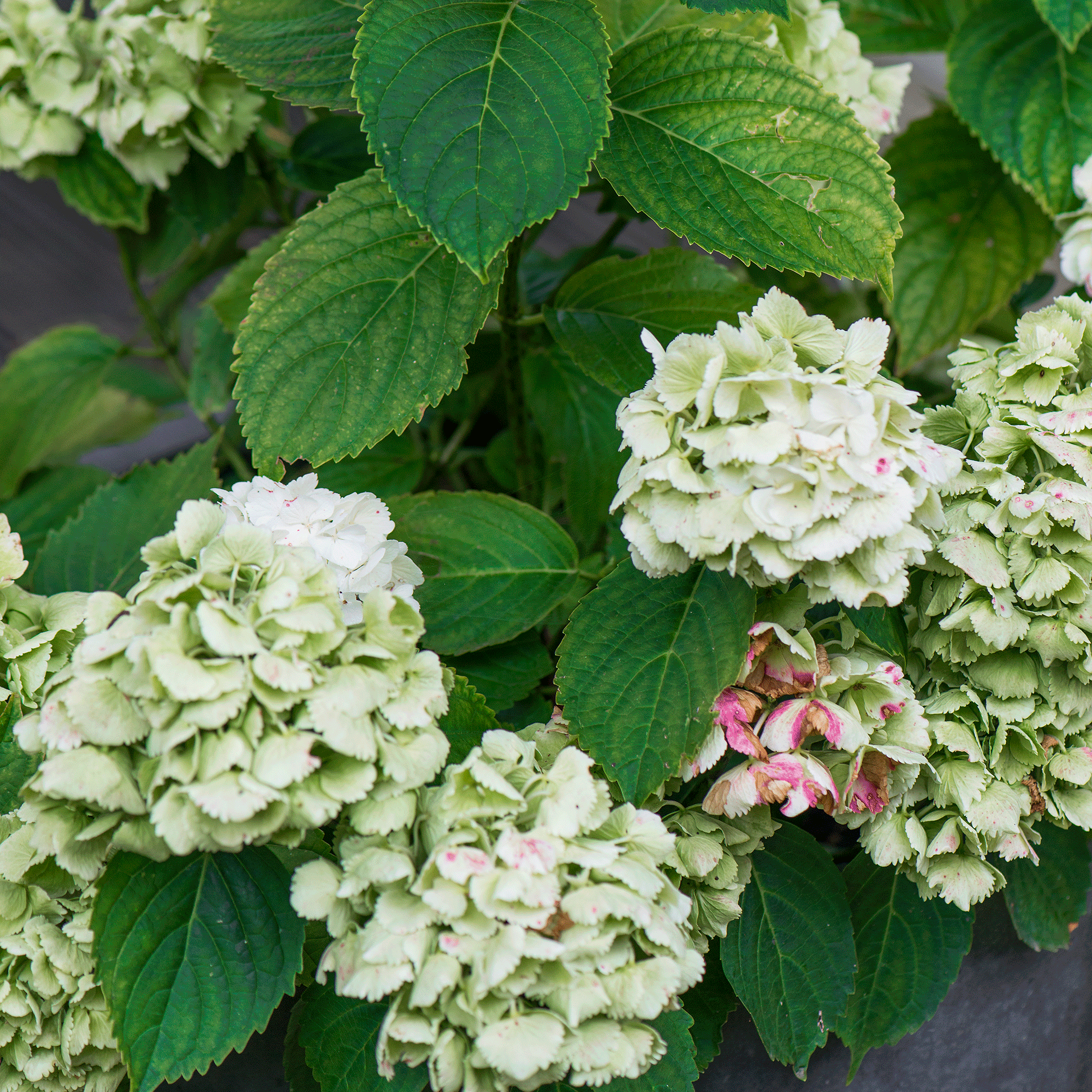How to grow hydrangeas in pots – an easy guide for beautiful containers
The experts reveal the benefits of growing these beautiful blooms in containers


Hydrangeas are one of the most impactful flowers to add to any garden design. Available in a range of bright and beautiful hues, this particular bloom can add a pop of colour to any space. But you don’t need to have a sprawling garden to enjoy the beauty of these plants because you can learn how to grow hydrangeas in pots.
Hydrangeas are a classic favourite for garden border ideas, and they're also one of the best shrubs for pots. We asked the experts to take us through the most important things to know about growing them in a container and how to help them truly thrive.
How to grow hydrangeas in pots
We must start by outlining the two different types of hydrangeas. There are shrubby hydrangeas and climbing hydrangeas. As the name denotes, climbing hydrangeas are best suited for brightening up exterior walls and covering outbuildings because of the way that they climb upwards as they grow. However, climbing hydrangeas won’t fare well in a container because they want to spread out when they grow.

Shrubby hydrangeas, on the other hand, are well suited to being used in garden borders and in containers. So, when we refer to hydrangeas going forward, we are talking about the shrubby hydrangea variety.
When planted in a pot, not only is it easier to control the size of the eventual hydrangea but you can also move the pot or pots around to optimise their exposure to the sun and protect them from harsh weather conditions later in the year.
And if you like to change around the arrangement of your garden ideas or outdoor space frequently, potted hydrangeas are a great option. But what will you need on hand to get started potting your hydrangea plants?
What you'll need
- A flowering shrubby Hydrangea plant; one of the dwarf varieties such as the Hydrangea macrophylla 'Altona' from Crocus or Hydrangea macrophylla ‘Little White’ from Waitrose Garden are ideal for potting and new gardeners
- A pot or container of at least 40cm (16in); this plastic option from Wilko is a real bargain
- A trowel; this Magnusson Trowel from B&Q is great value
- Soil
- Peat-free compost; Westland John Innes Peat-free Multi-purpose Compost from B&Q is a great price and has some excellent reviews
- Fertilisier or flowering plant food; try the Miracle-Grow Performance Organics All Purpose Liquid Plant Food from Amazon
- A watering can with a sprinkle nozzle; try this Spear & Jackson Steel Watering Can from John Lewis & Partners
- A pair of sharp secateurs; these Gardena Bypass Secateurs from Argos are a brilliant option
Choosing the right container
‘Hydrangeas appreciate ample space for their roots to spread and grow so always opt for a container that provides sufficient room for the plant's development but isn’t so large that the plant will become hard to handle,’ says Muhammed Haq of Norfolk Garden Sheds.
Sign up to our newsletter for style inspiration, real homes, project and garden advice and shopping know-how
The size of the pot that you choose is particularly important. ‘Pots that are around 16 – 24 inches in size are recommended for an average-sized hydrangea plant. This size of pot will comfortably house your hydrangea plant for a good few years,’ suggests Fiona Jenkins, Myjobquote.co.uk’s gardening expert.
It’s also important, ‘to leave roughly three inches of space from the soil to the rim of the pot,’ says Dani Turner, Customer Experience Director at family-run florist, Bunches.
You will, however, want to opt for a weatherproof pot that is frost proof. This means avoiding pots or containers made from terracotta, ceramic or clay, which may be prone to shattering in the colder winter weather.
Because hydrangeas can grow quite tall – with large varieties growing over a metre high, medium options growing up to one metre high, while dwarf hydrangeas are much smaller – you will also want to choose a pot that won’t topple over easily.

Where should I position my potted hydrangea?
Getting the right balance between sun and shade for a hydrangea plant is key. They thrive in bright but indirect sunlight – somewhere that gets the morning sun and shade in the afternoon would be a prime location to place your potted hydrangea.
This makes them perfect for north-facing garden ideas, but even a south-facing windowsill would work, if you’re short on outdoor space.
Just make sure that you choose the right place, as incorrect positioning can actually cause a hydrangea to stop flowering or turn brown.
Pay attention to the type of soil and compost
The type of soil you need will depend on the type of hydrangea you want to grow. The most popular blue hydrangeas will need ericaceous compost with a constant acidic PH level between 5.2 and 5.5. However, for pink flowering hydrangeas, you should use a loam-based potting mix.
Guy Barter, Chief Horticulturist at the Royal Horticultural Society adds, ‘if ericaceous compost is not available and even if it is, adding blueing compound from January will help ensure good blue in blue flowering cultivars,’ which is especially handy if you have chosen to grow blue hydrangeas.
You’ll also want to, ‘ensure you have a well-draining potting mix as hydrangeas prefer soil that doesn't become waterlogged,’ reveals Muhammed. ‘I recommend looking for a high-quality potting mix specifically formulated for container gardening as this will be premixed for you to be optimal for these growing conditions.’

Keep on top of watering
The word hydrangea is actually derived from Greek and means ‘water vessel,’ so it’s no surprise that watering is especially important for this flowering plant.
‘Hydrangeas are a thirsty plant and if the soil is dry, it won’t grow sufficiently,’ suggests Dani. This is especially true during the summer months when containers can dry out quickly.
If the soil is dry, water it thoroughly, making sure to focus on the base of the plant and allow any excess water to drain. ‘However, you have to be cautious not to overwater and create waterlogged conditions, as this can lead to root rot,’ says Muhammed.

Fertilise with care
Much like with watering, you don’t want to overdo it when it comes to fertiliser, as this can often result in excessive leaf growth at the expense of the beautiful blooms.
‘To help your potted hydrangeas thrive, it's important to provide them with proper nourishment so I highly recommend investing in organic fertiliser designed for flowering plants as this will provide them with all the necessary nutrients they need for healthy growth and abundant blooms,’ affirms Muhammed.
‘You should also equip yourself with a watering can fitted with a sprinkle nozzle for gentle and precise watering of your hydrangeas as a regular nozzle could lead to oversaturated soil,’ he adds.

Do you need to prune a potted hydrangea?
Regardless of whether your hydrangea is planted in the ground or a pot, pruning is important to keep them flowering as they should. Regular pruning also helps to control growth.
How and when you prune, ‘depends on the type, as there are many different types you can pot, but it’s generally in the spring or summer,’ says Dani.
Deadheading is also encouraged – which is when you remove the dead or faded flowers from the plant.

Ellis Cochrane has been a Freelance Contributor for Ideal Home since 2023. Ellis has been writing about homes, interiors and gardens for four years now, with her also contributing to House Beautiful, Country Living, Expert Reviews, Real Homes and Stylist.